I watch this short documentary on the Great Manhattan Boat Lift of 9/11/01 at least once a year. In the face of natural and unnatural disasters, it is good to be reminded that when things are at their worst mariners will do all that they can to help. On the 16th anniversary of the attacks of 9/11, BOATLIFT, An Untold Tale of 9/11 Resilience.
Something to take one’s mind off the apocalyptic hurricane bearing down on the west coast of Florida.
Rare images of blue whale feeding behavior
Krill Joy
From Slate:This video catches a rare glimpse of a gigantic, lunge-feeding blue whale deciding on what’s for lunch. A nonintrusive drone from Oregon State University quietly observed the world’s largest animal in the Southern Ocean off Australia. Cruising along at 6.7 mph—according to Leigh Torres of the Marine Mammal Institute at Oregon State, who led the expedition—it spots a worthy mass of krill and flips on its side, mouth wide open, to plow into its unlucky meal at 1.1 mph.
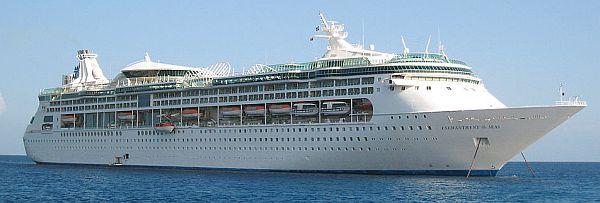
MS Enchantment of the Seas beneath sunnier skies
As Hurricane Irma proceeds toward South Florida with apocalyptic fury, it is getting harder and harder to find a place of safety or a way to escape. Gasoline and supplies are in short supply. The few north-south roads out of the state are clogged with traffic. Shelters are filling rapidly. Royal Caribbean International took a different approach to evacuating its 1,500 employees in Port Miami. Yesterday, it put them aboard the 2,252-passenger Enchantment of the Seas and sailed out of the Port of Miami, away from the path of Hurricane Irma.
The Miami Herald reports: Royal Caribbean canceled Enchantment’s regular sailing scheduled for Friday earlier in the week, said spokeswoman Cynthia Martinez, and decided to offer the ship to employees and their families — free of charge. “Felt that was the right thing to do,” Martinez said in an email.
Guests from the Enchantment’s previous sailings who wished to stay aboard because they could not leave Florida were allowed to do so, she said. No one will be charged for staterooms, food, entertainment or gratuities. Continue reading
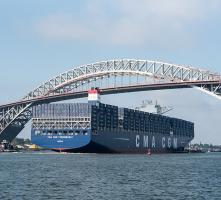
Photo:Reena Rose Sibayan | The Jersey Journal
Yesterday morning, the 14,400 TEU container ship, CMA CGM Theodore Roosevelt, sailed under the newly-elevated Bayonne Bridge becoming the largest container ship ever to call on the Port of New York and New Jersey. She previously set a record as the largest ship to navigate through the Panama Canal. She is also the largest container ship to make a port call on the United States East Coast. For more photos click here.
The ship is 1,202 feet (366 meters) long — the length of four football fields — and 166 feet (50 meters) wide.

Kim Wall
On August 10th, inventor Peter Madsen took Swedish journalist Kim Wall on a trip aboard his private submarine UC3 Nautilus in Copenhagen harbor as part of an interview. The submarine sank under mysterious circumstances. Madsen was rescued but Wall disappeared. Madsen initially claimed that he had put Wall ashore on an island. About two weeks later, Wall’s headless and limbless torso washed ashore.
Madsen, who has been charged with murder, is now claiming that Wall was killed accidentally when she was struck in the head by the submarine’s 155-pound hatch. Madsen claims that he threw her body overboard in a panic. He then intentionally sank the submarine. Madsen denies dismembering the body and offered no explanation as to how Wall’s headless and limbless torso came to wash ashore in Copenhagen harbor.
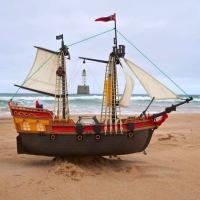 Two Scottish brothers, eight-year-old, Ollie and five-year-old, Harry Ferguson, are too young to go to sea themselves, so instead, they sent their toy pirate sailing ship on a voyage from the fine old port of Peterhead, Aberdeenshire earlier this year. The toy was a plastic Playmobil ship, named suitably Adventure. With the help of their father, the boys modified Adventure to make more a seaworthy craft. They added ballast and polystyrene foam to help it stay afloat. They also included a note asking anyone who finds the boat to send them a picture and launch Adventure back into the sea.
Two Scottish brothers, eight-year-old, Ollie and five-year-old, Harry Ferguson, are too young to go to sea themselves, so instead, they sent their toy pirate sailing ship on a voyage from the fine old port of Peterhead, Aberdeenshire earlier this year. The toy was a plastic Playmobil ship, named suitably Adventure. With the help of their father, the boys modified Adventure to make more a seaworthy craft. They added ballast and polystyrene foam to help it stay afloat. They also included a note asking anyone who finds the boat to send them a picture and launch Adventure back into the sea.
One day, I really want to make it to Gloucester, MA for the yearly schooner festival held over the Labor Day weekend. Perhaps one year I will sail there in my own boat, which is definitely not a schooner. In the meantime, here is a beautiful video of yesterday’s Gloucester Schooner Festival Parade of Sail.
Here is a fascinating new approach to the design of a mast and sail. The developers at Next Technologies claim that their Inflated Wing Sail (IWS) is stable in every wind conditions and offers a smooth balanced new way of sailing. No more winches, halyards, shrouds or complex deck gear.
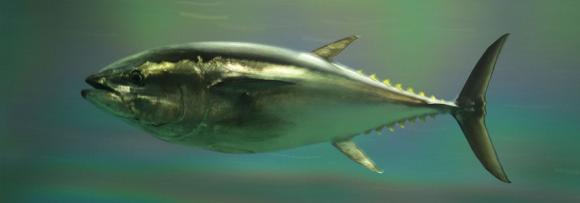 The Pacific bluefin tuna is at risk of becoming commercially extinct. Overfishing has depleted stocks of the fish by an estimated 97%. Now the principle tuna-fishing nations have reached an agreement to gradually rebuild the depleted stocks, while still allowing Japan, by far the largest consumer of the bluefin, to continue to catch and consume the highly prized fish. Japan eats 80 percent of the $42 billion global haul of bluefin and had resisted restrictions on the fishery.
The Pacific bluefin tuna is at risk of becoming commercially extinct. Overfishing has depleted stocks of the fish by an estimated 97%. Now the principle tuna-fishing nations have reached an agreement to gradually rebuild the depleted stocks, while still allowing Japan, by far the largest consumer of the bluefin, to continue to catch and consume the highly prized fish. Japan eats 80 percent of the $42 billion global haul of bluefin and had resisted restrictions on the fishery.
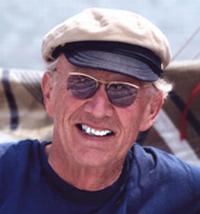 I recently learned that Meade Gougeon has died at aged 78 of melanoma. More than 45 years ago, I was a young student of naval architecture at the University of Michigan. I met Meade when he came to speak to the Quarterdeck student society about a relatively new wood-epoxy laminate boat building technology that he and his brothers had developed. They called it the Wood Epoxy Saturation Technique, or the WEST System.
I recently learned that Meade Gougeon has died at aged 78 of melanoma. More than 45 years ago, I was a young student of naval architecture at the University of Michigan. I met Meade when he came to speak to the Quarterdeck student society about a relatively new wood-epoxy laminate boat building technology that he and his brothers had developed. They called it the Wood Epoxy Saturation Technique, or the WEST System.
More than 45 years ago, I was a young student of naval architecture at the University of Michigan. I met Meade Gougeon when he came to speak to the Quarterdeck student society about a relatively new wood-epoxy laminate boat building technology that he and his brothers had developed. They called it the Wood Epoxy Saturation Technique, or the WEST System.
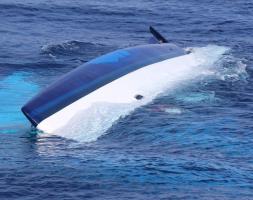 Lewis Bennett, 38, a British engineer, was recently arrested by the FBI on charges related to possession of stolen rare silver and gold coins. The story behind the arrest gets very strange, involving a Caribbean theft, a missing wife, and a sunken catamaran.
Lewis Bennett, 38, a British engineer, was recently arrested by the FBI on charges related to possession of stolen rare silver and gold coins. The story behind the arrest gets very strange, involving a Caribbean theft, a missing wife, and a sunken catamaran.
On May 14th, Bennett was sailing with his wife, Isabella Hellman from Cuba to Florida. They had married in February and were on a delayed honeymoon on their 37′ catamaran, Surf into Summer. They have a 9-month-old daughter who was not with them aboard the boat.
While in the Florida Straits, the boat sank, Hellman went missing and Bennett was rescued from a life raft by the US Coast Guard. He told his rescuers that he had been below asleep, with Hellman on watch on deck. He said that he was awoken when the catamaran hit something and began taking on water rapidly. When Bennet came on deck, he said that his wife was nowhere to be found. The Coast Guard searched for three days for Isabella Hellman without finding any trace of the missing woman.
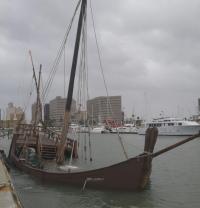 The last of Corpus Christi’s Columbus replica ships has sunk. In 1992, the quincentenary of Columbus’ first voyage, replicas of his ships; the Niña, Pinta and the Santa Maria; arrived in Corpus Christi, Texas after sailing from Spain and touring the US East Coast. The ships were donated to the city. The Santa Maria and the Pinta were broken up in 2014. The Niña remained afloat at a dock behind behind Joe’s Crab Shack. Or at least she was afloat until Hurricane Harvey came calling, when the Niña began taking on water and sank. Click here for more photos.
The last of Corpus Christi’s Columbus replica ships has sunk. In 1992, the quincentenary of Columbus’ first voyage, replicas of his ships; the Niña, Pinta and the Santa Maria; arrived in Corpus Christi, Texas after sailing from Spain and touring the US East Coast. The ships were donated to the city. The Santa Maria and the Pinta were broken up in 2014. The Niña remained afloat at a dock behind behind Joe’s Crab Shack. Or at least she was afloat until Hurricane Harvey came calling, when the Niña began taking on water and sank. Click here for more photos.
Corpus Christi’s Niña is not the only replica of the ship now sailing. The Michigan Maritime Museum in South Haven, MI will be hosting The Columbus Society‘s replica Niña and Pinta over the Labor Day Weekend. Click here to learn more. Thanks to Robert Kennedy for contributing to this post.
 The boats and the circumstances are all different and yet each in its way is the same, from the “little ships” of Dunkirk, to the Manhattan Boat-Lift of 9/11, to the jon-boat navy of the Texas Gulf coast. When people need help, mariners of every stripe come to the rescue.
The boats and the circumstances are all different and yet each in its way is the same, from the “little ships” of Dunkirk, to the Manhattan Boat-Lift of 9/11, to the jon-boat navy of the Texas Gulf coast. When people need help, mariners of every stripe come to the rescue.
The flooding caused on the Texas Gulf coast by Hurricane Harvey is unprecedented. A third of Harris County, Texas, which includes Houston, the fourth largest city in the US, with a population of 4 million, is now fully underwater. And the flood waters just keep rising. Rainfall totals in some areas are expected to exceed 4 feet.
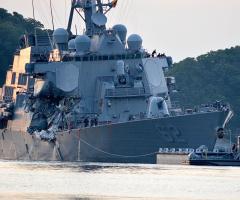 Two high tech guided missile destroyers charged with protecting the fleet from incoming missiles somehow failed to avoid collision with two slow-speed commercial vessels. Tragically, seventeen sailors died in the collisions. Some immediately blamed cyber-hacking, although a Navy investigation has turned up zero evidence to support the claim. Now, the focus is on more prosaic and avoidable causes — inadequate training, sleep deprivation, and poor ship management.
Two high tech guided missile destroyers charged with protecting the fleet from incoming missiles somehow failed to avoid collision with two slow-speed commercial vessels. Tragically, seventeen sailors died in the collisions. Some immediately blamed cyber-hacking, although a Navy investigation has turned up zero evidence to support the claim. Now, the focus is on more prosaic and avoidable causes — inadequate training, sleep deprivation, and poor ship management.
The Navy Times put it simply — “Maybe today’s Navy is just not very good at driving ships.” They write: “The problem is years in the making. Now, the current generation of officers rising into command-level billets lacks the skills, training, education, and experience needed to operate effectively and safely at sea, according to current and former officers interviewed by Navy Times.”
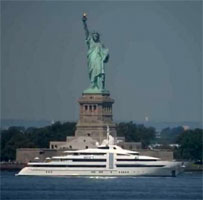 The arrogance is as impressive as the yachts themselves. Rather than paying for dockage, in recent years, billionaire Russian oligarchs have taken to anchoring their yachts in the public anchorage in front of the Statue of Liberty while in New York Harbor. This summer, Le Grand Bleu, a 370-foot long luxury yacht owned by Evgeny Markovich Shvidler, took up residence for weeks at a time between April and June in front of the statue, effectively blocking the view of the iconic landmark for tourists and residents alike. And it is not just the Russians.
The arrogance is as impressive as the yachts themselves. Rather than paying for dockage, in recent years, billionaire Russian oligarchs have taken to anchoring their yachts in the public anchorage in front of the Statue of Liberty while in New York Harbor. This summer, Le Grand Bleu, a 370-foot long luxury yacht owned by Evgeny Markovich Shvidler, took up residence for weeks at a time between April and June in front of the statue, effectively blocking the view of the iconic landmark for tourists and residents alike. And it is not just the Russians.
After Le Grand Bleu raised anchor and departed, Swiss-Italian Ernesto Bertarelli dropped the hook of his 318-foot Vava II. He was followed by German billionaire Reinhold Würth in 280-foot Vibrant Curiosity in early August.
Remarkably, Scotland’s Mylne Yacht Design was founded by Alfred Mylne I in 1896 and has been in continuous operation for more than 120 years. Alfred Mylne designed over 400 yachts in his career.
Here is a short video of classic yachts sailing on the Clyde in the 1930s, featuring designs by Alfred Mylne and Charles Nicholson, includingThendara, Iyruna, Audifax , Shamrock V, Tigris, Panope, Veronica, and the original Royal Yacht Britannia.
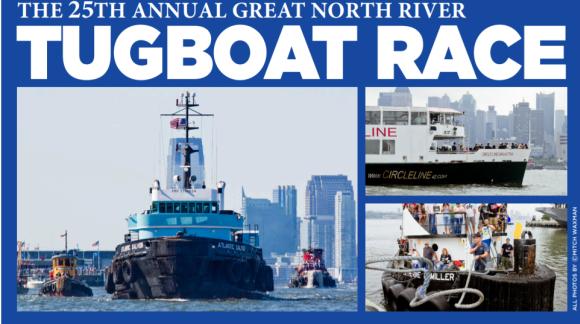 For those in and around New York harbor, the 25th Annual Great North River Tugboat Race & Competition, sponsored by the Working Harbor Committee, is coming up on Sunday, September 3rd. The Parade of Tugs starts on the Hudson River at 10 AM. Free viewing is available at Pier 84 located at W. 44th Street & Hudson River Park. The tugs will proceed to the starting line at 70th Street. The race begins at 10:30 AM. Nose-to-nose pushing contests and line-toss competitions will start around 11 AM. At Noon the amateur line-toss and spinach-eating contests will commence followed by an 1 PM awards ceremony.
For those in and around New York harbor, the 25th Annual Great North River Tugboat Race & Competition, sponsored by the Working Harbor Committee, is coming up on Sunday, September 3rd. The Parade of Tugs starts on the Hudson River at 10 AM. Free viewing is available at Pier 84 located at W. 44th Street & Hudson River Park. The tugs will proceed to the starting line at 70th Street. The race begins at 10:30 AM. Nose-to-nose pushing contests and line-toss competitions will start around 11 AM. At Noon the amateur line-toss and spinach-eating contests will commence followed by an 1 PM awards ceremony.
For an even better view of the parade of tugs and the tugboat race, there is also a Continue reading
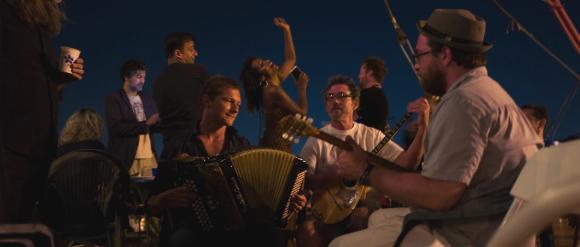 PortSide New York is a non-profit based in New York harbor on the historic tanker Mary A. Whalen. Their goal is to create a new kind of maritime destination in NYC, one that sets a new standard for how to bring urban waterways to life. Toward that goal, PortSide hosts TankerTime 2017, summertime get-togethers on the main deck of the Mary A. Whalen, with special events on the Second Sunday of each of the warmer months. Here is a fascinating and timely post by the president of PortSide, Carolina Salguero, about the latest Second Sunday.
PortSide New York is a non-profit based in New York harbor on the historic tanker Mary A. Whalen. Their goal is to create a new kind of maritime destination in NYC, one that sets a new standard for how to bring urban waterways to life. Toward that goal, PortSide hosts TankerTime 2017, summertime get-togethers on the main deck of the Mary A. Whalen, with special events on the Second Sunday of each of the warmer months. Here is a fascinating and timely post by the president of PortSide, Carolina Salguero, about the latest Second Sunday.
TankerTime: Do you have any Slovenians?
by Carolina Salguero, President, PortSide NewYork
In this era of Charlottesville, anti-immigrant politics and Muslim bans, I want to share how PortSide NewYork is celebrating different cultures and bringing different people together. One of our means is music and evening TankerTime on the MARY A. WHALEN. In doing so, we continue the multicultural traditions of Red Hook and port districts in general.
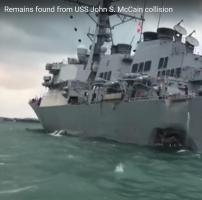 Following the recent collision of a tanker with the US Navy destroyer USS John S. McCain, in which 10 sailors are missing, the US Navy has dismissed Vice Admiral Joseph Aucoin as commander of the 7th Fleet. There have been four significant casualties involving ships of the 7th fleet in Asia this year. The casualties include the collision of the USS Fitzgerald with a container ship in June off the coast of Japan, killing seven sailors. Rear Admiral Phil Sawyer, who had already been named to succeed Admiral Aucoin earlier, has assumed command of the 7th Fleet.
Following the recent collision of a tanker with the US Navy destroyer USS John S. McCain, in which 10 sailors are missing, the US Navy has dismissed Vice Admiral Joseph Aucoin as commander of the 7th Fleet. There have been four significant casualties involving ships of the 7th fleet in Asia this year. The casualties include the collision of the USS Fitzgerald with a container ship in June off the coast of Japan, killing seven sailors. Rear Admiral Phil Sawyer, who had already been named to succeed Admiral Aucoin earlier, has assumed command of the 7th Fleet.
US Navy divers have been reported to have located “some remains” in the flooded sections of the destroyer. Malaysian officials are also reported to have found one body, which is still being identified.
In response to the series of casualties, Chief of Naval Operations John Richardson has called for an immediate “operational pause” across the U.S. fleet so commanders can assess safety.

“Fat Leonard” Francis
The “Fat Leonard” Navy bribery and corruption scandal just keeps rolling on. In September of 2013, Navy investigators arrested a 350 pound Malaysian businessman, Leonard Glenn Francis, who was CEO of Glenn Defense Marine Asia (GDMA), a contractor that provided port services to the US Navy. Known universally as “Fat Leonard,” Francis was charged with paying bribes, providing prostitutes and handing out Lady Gaga tickets to naval officers in exchange for classified information to be used to help direct business to GDMA. GMDA the overcharged the Navy for port services by millions of dollars. “Fat Leonard” Francis plead guilty in 2015.
So far 28 individuals have been charged and 18 have pleaded guilty in the decade-long multi-million dollar bribery scam. Recently two more Navy officers and two executives of GDMA entered guilty pleas or were sentenced in the scandal. On August 5th, the Navy announced that “U.S. Navy commander Bobby Pitts pleaded guilty today in connection with his efforts to obstruct a federal criminal investigation.” Then three days later, Jesus V. Cantu, 59, a retired Navy captain and Stanford graduate, pleaded guilty in federal court in San Diego to conspiracy to commit bribery.
